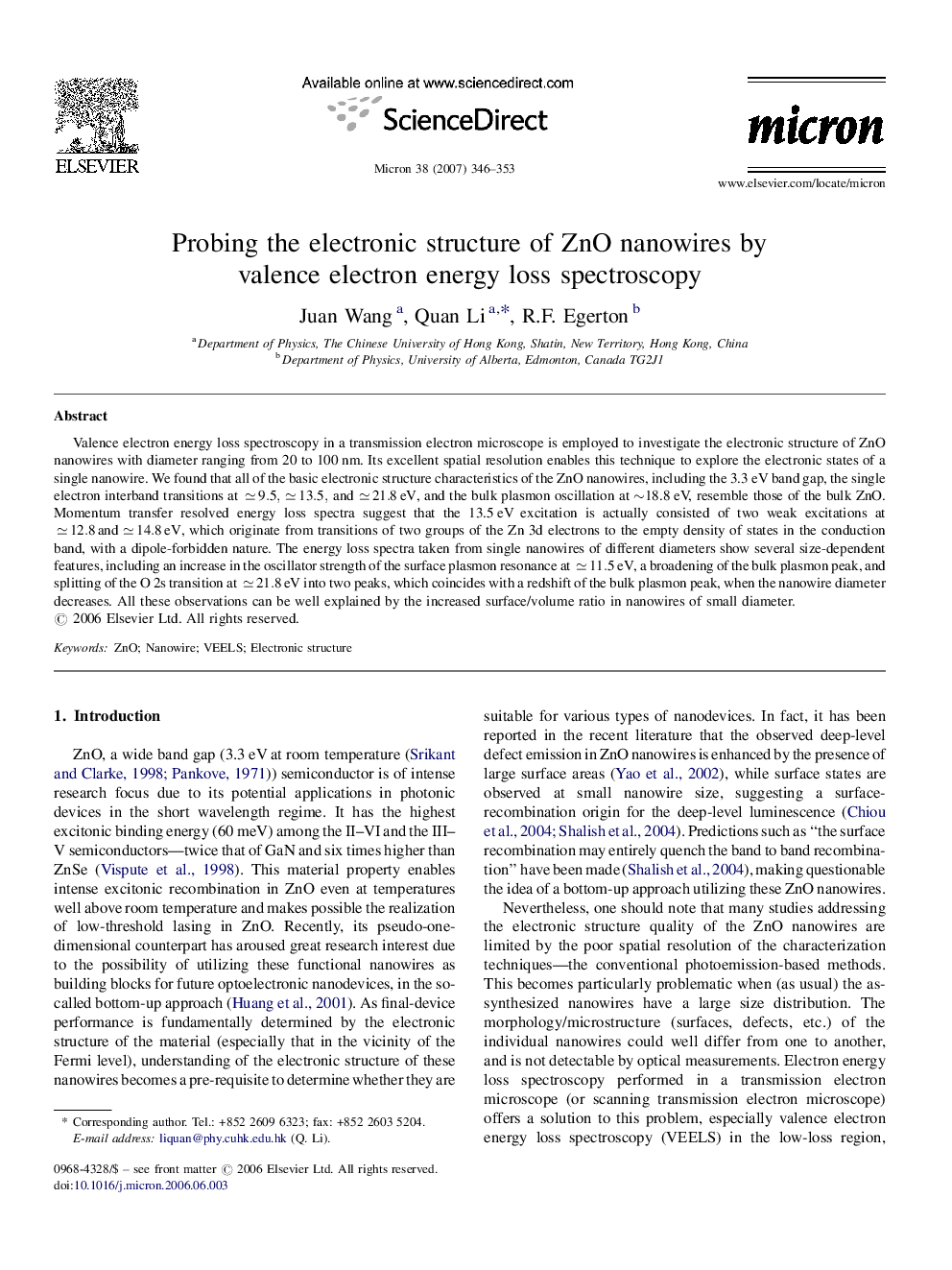| Article ID | Journal | Published Year | Pages | File Type |
|---|---|---|---|---|
| 1589879 | Micron | 2007 | 8 Pages |
Abstract
Valence electron energy loss spectroscopy in a transmission electron microscope is employed to investigate the electronic structure of ZnO nanowires with diameter ranging from 20 to 100Â nm. Its excellent spatial resolution enables this technique to explore the electronic states of a single nanowire. We found that all of the basic electronic structure characteristics of the ZnO nanowires, including the 3.3Â eV band gap, the single electron interband transitions at â9.5,â13.5,andâ21.8eV, and the bulk plasmon oscillation at â¼18.8Â eV, resemble those of the bulk ZnO. Momentum transfer resolved energy loss spectra suggest that the 13.5Â eV excitation is actually consisted of two weak excitations at â12.8andâ14.8eV, which originate from transitions of two groups of the Zn 3d electrons to the empty density of states in the conduction band, with a dipole-forbidden nature. The energy loss spectra taken from single nanowires of different diameters show several size-dependent features, including an increase in the oscillator strength of the surface plasmon resonance at â11.5eV, a broadening of the bulk plasmon peak, and splitting of the O 2s transition at â21.8eV into two peaks, which coincides with a redshift of the bulk plasmon peak, when the nanowire diameter decreases. All these observations can be well explained by the increased surface/volume ratio in nanowires of small diameter.
Keywords
Related Topics
Physical Sciences and Engineering
Materials Science
Materials Science (General)
Authors
Juan Wang, Quan Li, R.F. Egerton,
